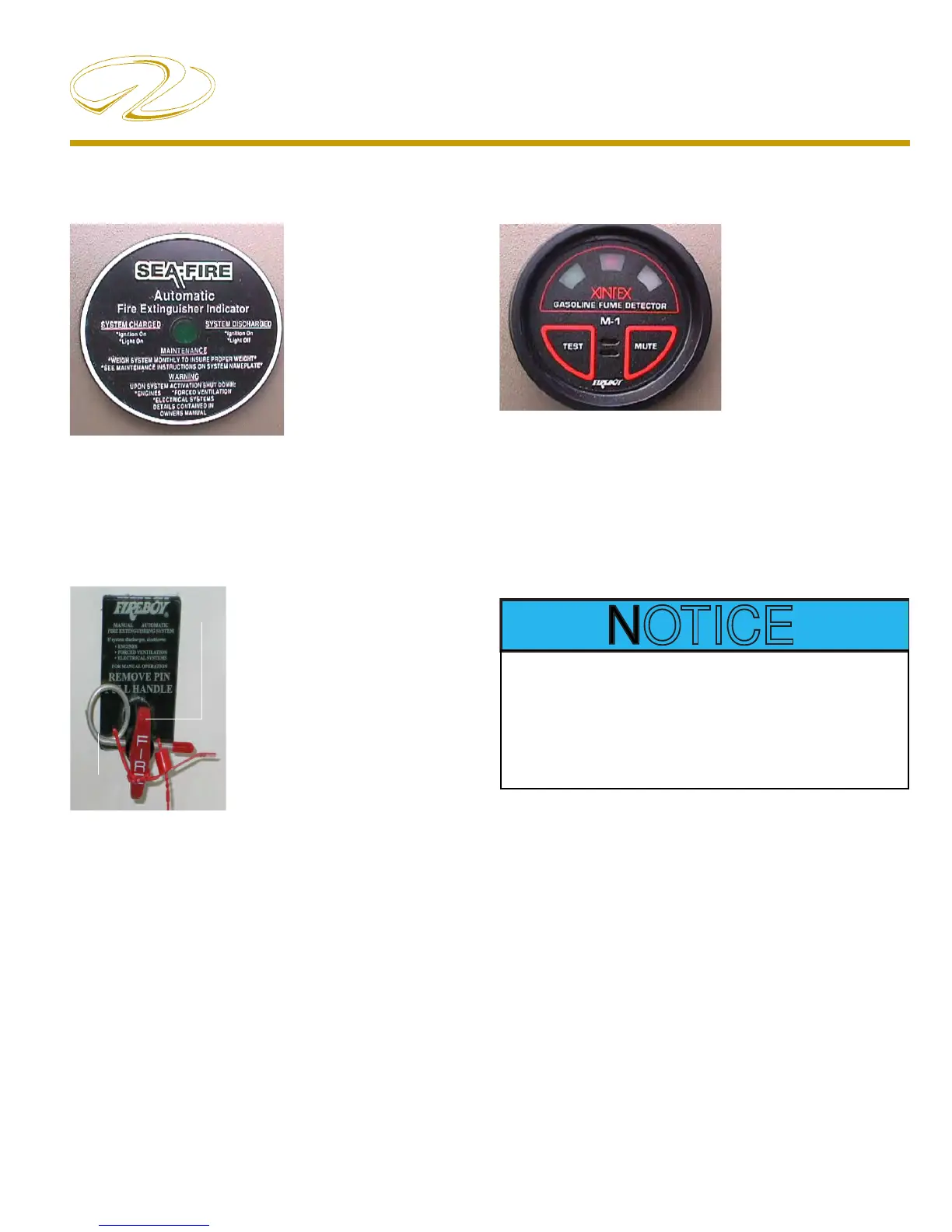11
Engine & Controls
BECOME FAMILIAR WITH THE ENGINE
FAULT CODE SYSTEM. SHOULD AN ENGINE
MALFUNCTION DEVELOP THE OPERATOR
WILL BE ABLE TO REACT FASTER TO THE
SITUATION.
Automatic Fire Extinguishing System
If installed the system
utilizes an instrument
display unit light that
provides the operator
with a system status of
a charged or uncharged
condition by an audible
alarm. With the ignition
switch on and a no light
condition indicates that
the system has been discharged.
If the system should discharge the ignition system will
be instantaneously interrupted. Should this occur shut
down the engine and any electrical system components
along with closing any open hatches.
If a re has started in the engine compartment nd the
system manual cable assembly
located in the cockpit. Remove
the safety pin from the “Fire T
Handle” and pull rmly on the
“Fire” handle which will activate
the re extinguisher unit in the
engine compartment. A loud
“rushing air” sound may be
heard. Complete discharge will
take several seconds. Keep the
compartment closed for a period
of time su cient to permit the agent to soak all areas of
the protected space. is allows hot metals and fuel time
to cool. Refer to the automatic re extinguisher owner’s
manual for additional information.
Gas Vapor Detector
If installed the optional
gas vapor detector
determines if there is a
level of gasoline vapors
that is unsafe in the
engine room of the
boat. If installed, turn
on the unit and wait
about one minute for
it to do its safety test. If all is well it will give you a green
light. You must run the test before you start the engines.
In the event you don’t get a green light, you must investigate
the bilge of the boat for gas fumes or signs of a fuel leak
before starting the engines. If uncertain, consult a marine
service professional.
SAFETY
PIN
“FIRE”
HANDLE
